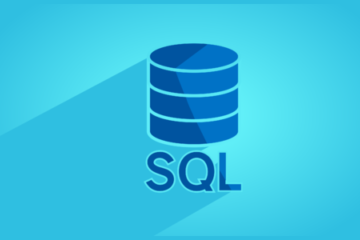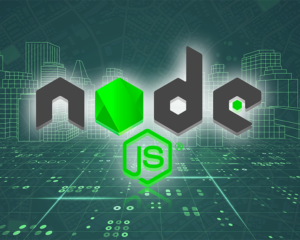This comprehensive course is designed to teach you SQL from the ground up, starting with the basics and gradually progressing to advanced topics. Whether you’re a complete beginner or looking to enhance your SQL skills, this course will equip you with the knowledge and expertise needed to become proficient in working with databases. Each section offers clear explanations, practical examples, and hands-on activities to reinforce learning and prepare you for real-world SQL applications.:
Learning Objectives
In this course, you will learn:
- Know relational databases and SQL.
- Using SQL queries to retrieve data.
- SQL INSERT, UPDATE, and DELETE statements.
- Understanding SQL Constraints.
- SQL joins and Combine Data from Multiple Tables.
- Aggregate Functions in SQL for Summarizing Data.
- Create and Manage Database Objects.
Course Modules
MODULE 1
Introduction to SQL
- Lesson 1: Understanding Relational Databases and SQL
- Lesson 2: History and Evolution of SQL
- Lesson 3: SQL Standards and Variants
- Lesson 4: Setting up SQL Environment (MySQL, PostgreSQL, SQL Server, etc.)
MODULE 2
SQL Basics
- Lesson 1: SQL Syntax and Structure
- Lesson 2: Retrieving Data with SELECT Statement
- Lesson 3: Filtering Data with WHERE Clause
- Lesson 4: Sorting Data with ORDER BY Clause
MODULE 3
Working with Tables
- Lesson 1: Creating Tables with CREATE TABLE Statement
- Lesson 2: Modifying Tables with ALTER TABLE Statement
- Lesson 3: Dropping Tables with DROP TABLE Statement
- Lesson 4: Constraints (Primary Key, Foreign Key, Unique, Not Null)
MODULE 4
Data Manipulation Language (DML)
- Lesson 1: Inserting Data into Tables with INSERT Statement
- Lesson 2: Updating Data in Tables with UPDATE Statement
- Lesson 3: Deleting Data from Tables with DELETE Statement
- Lesson 4: Transactions and Transaction Control Commands (COMMIT, ROLLBACK)
MODULE 5
Querying Data
- Lesson 1: Retrieving Data from Multiple Tables with Joins (INNER JOIN, LEFT JOIN, RIGHT JOIN, FULL JOIN)
- Lesson 2: Subqueries and Nested Queries
- Lesson 3: Set Operators (UNION, INTERSECT, EXCEPT)
- Lesson 4: Grouping Data with GROUP BY Clause
MODULE 6
Aggregation Functions and Having Clause
- Lesson 1: Aggregate Functions (COUNT, SUM, AVG, MIN, MAX)
- Lesson 2: Using Aggregate Functions with GROUP BY Clause
- Lesson 3: Filtering Grouped Data with HAVING Clause
- Lesson 4: Advanced Aggregation Techniques
MODULE 7
Data Modification and Transaction Control
- Lesson 1: Using Data Modification Commands (INSERT, UPDATE, DELETE)
- Lesson 2: Understanding Transactions and ACID Properties
- Lesson 3: Managing Transactions with COMMIT, ROLLBACK, and SAVEPOINT
- Lesson 4: Transaction Isolation Levels
MODULE 8
Working with Views
- Lesson 1: Creating and Modifying Views
- Lesson 2: Retrieving Data from Views
- Lesson 3: Updating Data Through Views
- Lesson 4: Advantages and Use Cases of Views
MODULE 9
SQL Functions
- Lesson 1: Scalar Functions (String Functions, Numeric Functions, Date Functions)
- Lesson 2: Aggregate Functions (COUNT, SUM, AVG, MIN, MAX)
- Lesson 3: Date and Time Functions
- Lesson 4: User-Defined Functions (UDFs)
MODULE 10
SQL Performance Optimization
- Lesson 1: Understanding Query Execution Plans
- Lesson 2: Indexing Strategies (Types of Indexes, Indexing Best Practices)
- Lesson 3: Query Optimization Techniques
- Lesson 4: Monitoring and Tuning SQL Performance
MODULE 11
Advanced SQL Topics
- Lesson 1: Window Functions (ROW_NUMBER, RANK, DENSE_RANK)
- Lesson 2: Common Table Expressions (CTEs)
- Lesson 3: Recursive Queries
- Lesson 4: Pivot and Unpivot Operations
MODULE 12
Database Security and Permissions
- Lesson 1: Understanding Database Security Models
- Lesson 2: User Authentication and Authorization
- Lesson 3: Granting and Revoking Permissions
- Lesson 4: Database Auditing and Compliance
MODULE 13
Stored Procedures and Triggers
- Lesson 1: Creating and Managing Stored Procedures
- Lesson 2: Invoking Stored Procedures
- Lesson 3: Implementing Triggers (DML Triggers, DDL Triggers)
- Lesson 4: Best Practices for Using Stored Procedures and Triggers
MODULE 14
Working with JSON and XML Data
- Lesson 1: Storing and Querying JSON Data
- Lesson 2: Storing and Querying XML Data
- Lesson 3: JSON and XML Functions in SQL
- Lesson 4: Interoperability Between SQL and NoSQL Data
MODULE 15
Integration with Programming Languages
- Lesson 1: Connecting SQL with Programming Languages (Python, Java, etc.)
- Lesson 2: Executing SQL Statements from Programming Languages
- Lesson 3: Parameterized Queries and Prepared Statements
- Lesson 4: Handling SQL Injection Attacks
- Conclusion
- Project
- Assessment





